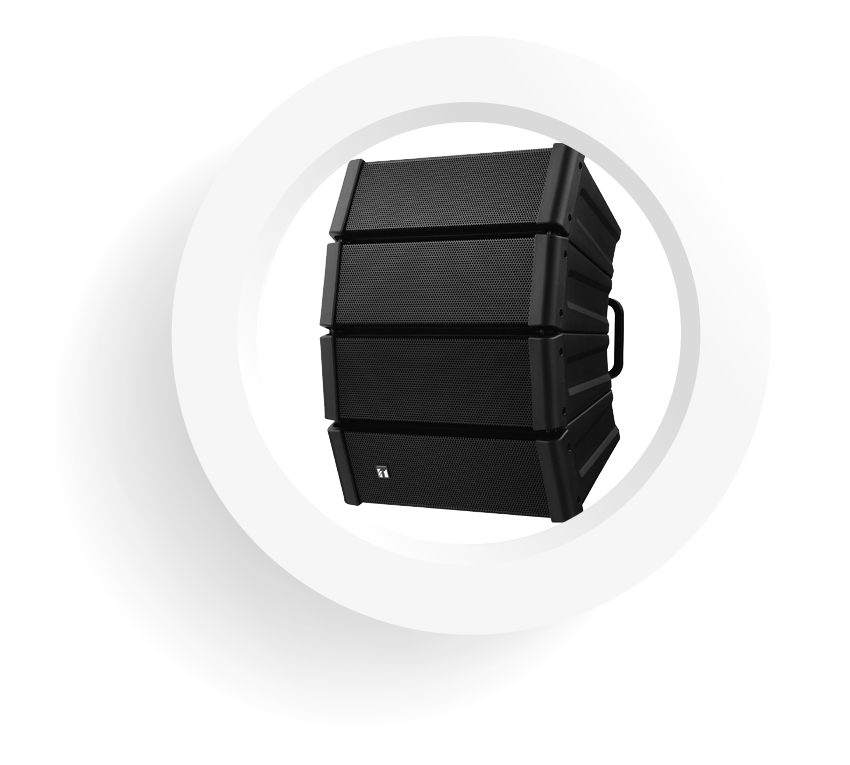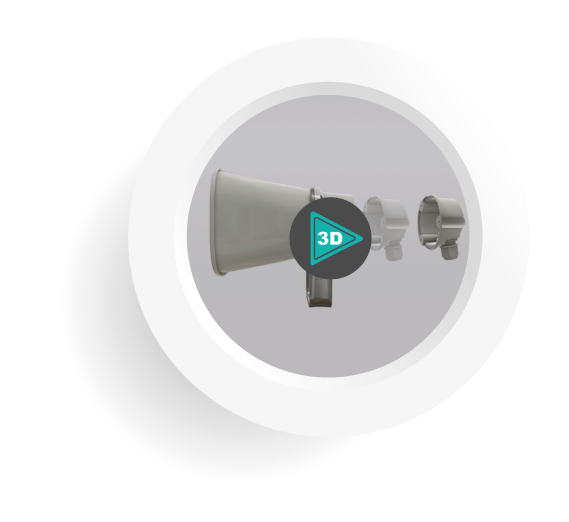Voice alarm systems
Objectives and use
Alarm systems that rely on spoken messages to warn and direct people are either referred to as electroacoustic emergency notification systems or voice alarm systems, depending on the applicable standard. Below, we use the term voice alarm for both types, provided that there are no differences between them.
The objective of voice alarm is to inform people in emergency situations using voice messages, thereby inducing them to leave a dangerous area quickly and in an orderly fashion. Voice alarm can also be used to initiate operational measures for the protection of property. The fire brigade can use such a system to issue clear instructions for targeted building evacuation. Such instructions are directed in particular to any external people present in these buildings.
Regulation and Standardisation
There exist different kinds of standards and regulations affecting voice alarm systems (VAS). Here we will mainly cover the standards and regulations that were originated from EU standardisations and are applied in several EU member states. There can exist further national standards covering parts of installations that are not covered by EU standards, e.g. for the fire resistance of cables. Furthermore there can exist national laws and regulations for constructions relating to fire. Please consult local experts or TOA individually in terms of national laws, regulations and standards.
Construction Product Directive and Regulation
The Construction Product Directive (CPD) defined general requirements for fire safety equipment. Adopted by most EU member states, it made three product standards from the EN 54 series mandatory for Voice Alarm Systems (VAS) in 2010. In March 2011, the Construction Product Regulation (CPR) replaced the CPD, with a transition period that ended on July 1, 2013. Unlike national directives, the CPR is legally binding across all EU member states and applies specifically to product certification.
Both CPD and CPR require certification of VAS components, including power supplies, electronic control systems (Voice Alarm Control and Indicating Equipment, VACIE), and loudspeakers. Products certified under the CPD remain valid under the CPR, but certification under the CPR comes with stricter requirements for factory production control and auditing. Under the CPR, the certification name changed from "EC Certificate of Conformity" to "Certificate of Constancy of Performance". Additionally, manufacturers must now provide a Declaration of Performance (DoP) to confirm compliance with essential product standard requirements.
It is important to note that while CPR regulates product standards, it does not affect national application or installation standards, which remain under the jurisdiction of individual member states.
The CPR has no influence on national application or installation standards. It affects the product only and is therefore a matter of the manufacturer.
Product Standards
The equipment of a VAS (meaning electronic control system VACIE, power supplies and loudspeakers) is to be tested and certified by a notified body (NB) on the following standards by the manufacturer:
- Electronic system (“VACIE”): EN 54-16
- Power supply (PSE): EN 54-4
- Loudspeaker: EN 54-24
We provide a wide range of certified voice alarm equipment, from electronic systems (VACIEs) including power supplies up to loudspeakers.
EU Application Standards
Two EU standards are applied in several EU member states:
- EN 50849 (published in 2017) replaced the previous EN 60849. It defines performance requirements for sound systems used to broadcast emergency messages to protect lives in specific areas.
- CEN/TS 54-32 is a Technical Specification within the EN 54 series. While not a harmonized standard, it has been adopted by some EU member states. It provides guidelines for the planning, design, installation, commissioning, use, maintenance, and modification of voice alarm systems in fire emergencies.
Both standards have similar requirements but not only for
- the power supply system: AC-mains and batteries
- power backup: 30 minutes alarm, 24 hours standby
- emergency messages: with 4 - 10 seconds attention drawing signal before message
- emergency speech levels: min. 65 dB, min. 6 dB above ambient noise, max. 120 dB
- intelligibility: STI equal or better than 0.5
The following table shows a comparison of both standards
| Covered Item | EN 50849 | TS 54-32 |
|---|---|---|
| General | general description of requirements and functions, maintenance, only responsibility for running system | detailed descriptions, also covering the entire process of planning up to the last approval, maintenance, detailed responsibilities |
| VAS concept, planning and design | - | considerations for making a concept for the VAS, risk-assessment, locations of components and cables, protections etc. |
| Installation | IEC 60364 or national standards | Mounting, interconnecting and testing the equipment and cables, or national standards |
| Commissioning, verification, third party approval, acceptance | - | Commissioning etc. by whom, training of operators |
| Product requirements | general description, partly similar with EN 54-16 | refers to EN 54-4/-16/-24 |
| Intelligibility measurement | several methods but mainly description for STI, application rules (no. of measurements etc.) | STI and STIPA, application rules (no. of measurements etc.) |
Personal contact is important to us
Contact us
You need further support with your acoustic project? Please don't hesitate to contact us.
We will be glad getting in contact with you as soon as possible.
TOA Electronics Europe GmbH
Süderstraße 282
20537 Hamburg · Germany
Give us a call: +49 (0) 40 25 17 19 0
Or: Contact us!







